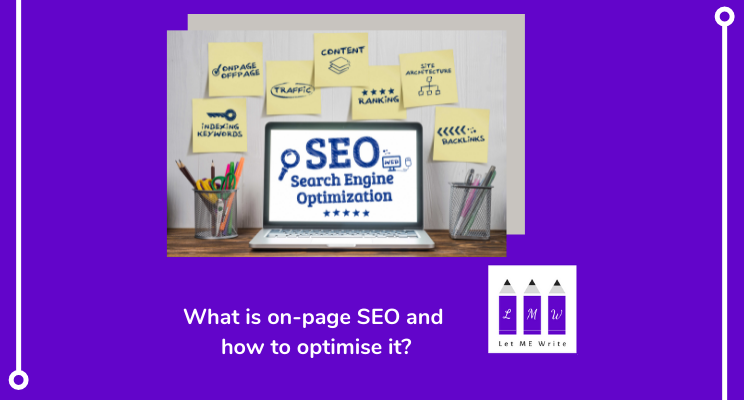On-page SEO is all the elements found within the content of your web page that tell Google what your page is about.
[Reading time 2 minutes]
The most important factors for beginners to understand are:
-
The quality of the content
-
The page title
-
The URL
-
The 1st sentence/paragraph
-
Subheadings
-
Image alt-text
-
Image filename
-
Internal links
-
External links
Quality of your content
The number 1 factor in having a web page that’s ranked high by Google, is delivering quality content to your audience. Make sure you answer the questions that many of your audience ask and deliver value on every single page and post on your site. If you are meeting your client’s needs with your content AND other sites can link directly to it, you will stand a better chance of grabbing a good position on the search engine results page (SERP).
Page title tag
The title you give your page can have a big impact on how well your page ranks for your target keywords. Title tags are the blurb that is displayed on the SERP when you use a search engine. The aim of the title tag is to encourage the user to click and to accurately describe what they can expect to see when they visit that link. Title tags should be around 50-60 characters long if possible, but Google will truncate anything more than 600 pixels so it’s best not to have titles that are too long.
Page URL
This should be kept short and meaningful AND crucially it should contain your target keyword.
The following is a good example of URL structure:
https://neilpatel.com/blog/seo-copywriting/ where the target keyphrase forms part of the URL. Google can immediately deduce what the content of the page will be about and this helps with ranking.
This however is not a good example:
https://www.imdb.com/name/nm0000323/?ref_=tt_cl_t4 All we know from this is that it’s a page on the IMDB website but we have no clue what it might be about.
On-page SEO in the first sentence
If you use your target keyword in the first sentence, you help Google, even more, to work out what your page is about and serve up your content to lots more readers. Try to get your keyword as close to the start of the sentence as possible without it sounding weird. Remember, write for your readers first and Google second.
Subheadings help your reader navigate your content
If your content is too densely packed together, the reader will find it harder to consume. Space out your points and signpost your reader by using subheadings to help them (and Google) understand your page more easily. Use your target keywords in one or two subheadings depending on the length of your text.
Include your keyword in your image alt text
Image alt text tells Google what your image is about since Google cannot ‘read’ images. Include your keyword in the alt text for maximum on-page SEO.
Image file names matter
Many people don’t bother with this step but if you give your image a descriptive filename that includes your keywords, you can rank on Google Images when users are searching for those topics.
Internal links can really improve on-page SEO
Linking the pages and posts on your website can massively improve your website’s overall ranking because Google is able to ascertain the structure of your site based on the links you have made. Aim to add 1-2 links to each page referencing relevant content on other pages on your site. At the end of each blog, it’s good practice to offer up another related blog or two for the reader to click to.
External links
You might be thinking, why would I add a link to someone else’s site which may cause my reader to bounce of my page? And that’s understandable.
However, for your website to rank, you need to gather domain authority – a measure of how worthy/valuable your website is and one way to do this is to link out to websites that have strong domain authority and provide excellent content.
If you take care of all the above, you will optimise your on-page SEO.
Next time we’ll discuss off-page SEO.
You may also be interested in this post ‘How do you write SEO content for your website?’

